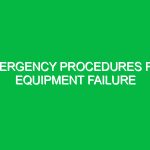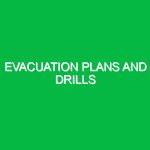Fire extinguishers are essential safety devices in both residential and commercial settings. Their role in preventing fire-related injuries and property damage is critical, particularly in the context of Health, Safety, and Environment (HSE) practices. Understanding the various fire extinguisher types and uses empowers individuals and organizations to take proactive measures in fire prevention and response. In this article, we will explore the different types of fire extinguishers, their specific applications, potential hazards, safety precautions, and relevant regulations governing their use.
Types of Fire Extinguishers
Fire extinguishers come in several types, each designed to combat different classes of fire. Understanding these distinctions is vital for effective fire management. Here’s a breakdown of the most common fire extinguisher types:
1. Water Extinguishers (Class A)
Water extinguishers are primarily used for Class A fires, which involve ordinary combustible materials such as wood, paper, and textiles. They work by cooling the burning material and reducing the temperature below its ignition point. However, water extinguishers should never be used on flammable liquids, electrical fires, or metal fires, as they can exacerbate the situation.
2. Foam Extinguishers (Class A and B)
Foam extinguishers are versatile as they can tackle both Class A and Class B fires, which involve flammable liquids like gasoline and oils. The foam blankets the burning liquid, preventing oxygen from fueling the fire. An anecdote from a friend in the hospitality industry highlights the effectiveness of foam extinguishers during a small kitchen fire. The quick application of foam not only extinguished the flames but also minimized damage to equipment.
3. Dry Powder Extinguishers (Class A, B, C, and Electrical)
Dry powder extinguishers are suitable for a wide range of fires, including those involving solid combustibles, liquids, and gases (Class A, B, and C). They work by interrupting the chemical reaction of the fire. They are also effective on electrical fires, making them a versatile choice in various settings. However, using dry powder extinguishers indoors can create visibility issues due to the powder cloud.
4. Carbon Dioxide (CO2) Extinguishers (Class B and Electrical)
CO2 extinguishers are primarily used for Class B fires and are effective on electrical fires as well. They work by displacing oxygen in the environment, effectively suffocating the fire. Their clean discharge leaves no residue, making them ideal for use in areas with sensitive equipment, such as data centers or laboratories.
5. Wet Chemical Extinguishers (Class K)
Wet chemical extinguishers are specifically designed for Class K fires, which involve cooking oils and fats. They work by forming a barrier between the fuel and oxygen, effectively smothering the fire. These extinguishers are essential in commercial kitchens, where the risk of grease fires is high. A case study from a local restaurant illustrates the importance of having a wet chemical extinguisher readily available. When a fryer caught fire, the immediate use of this extinguisher saved the kitchen from extensive damage.
6. Clean Agent Extinguishers (Class B and Electrical)
Clean agent extinguishers, such as Halon or FE-36, are effective for Class B and electrical fires. They work by interrupting the chemical reactions of the fire, similar to dry powder extinguishers, but with less mess. These extinguishers are particularly useful in environments where sensitive electronics are present, as they leave no residue and do not damage equipment.
Potential Hazards and Risks Associated with Fire Extinguisher Types
While fire extinguishers are crucial for safety, improper use or selection can lead to significant hazards. Here are some potential risks associated with fire extinguishers:
1. Incorrect Type Usage
Using the wrong type of extinguisher can worsen a fire. For instance, using water on a grease fire can spread the flames rapidly. It’s essential to ensure that the extinguisher type matches the fire class to avoid exacerbating the situation.
2. Inadequate Maintenance
Fire extinguishers require regular maintenance and inspection to ensure they are functional when needed. Neglecting these responsibilities can lead to malfunction during a fire emergency. Regular checks should include verifying the pressure gauge, ensuring the nozzle is unobstructed, and checking for physical damage.
3. Lack of Training
Even with the right extinguisher, improper use can lead to disaster. Training is vital to ensure individuals know how to operate extinguishers effectively. Many organizations offer training sessions that include hands-on practice, which can make a difference in emergency situations.
Safety Precautions and Best Practices
To optimize safety when using fire extinguishers, consider the following precautions and best practices:
1. Familiarize Yourself with Fire Extinguishers
Know the locations of fire extinguishers in your workplace or home. Familiarize yourself with their types and uses. An emergency can be chaotic; knowing where to find the right extinguisher can save precious seconds.
2. Regular Inspections and Maintenance
Conduct monthly inspections of fire extinguishers. Check the pressure gauge, inspect for physical damage, and ensure the extinguisher is easily accessible. A professional should conduct a comprehensive inspection annually.
3. Training and Drills
Participate in fire safety training and drills. Understanding how to operate extinguishers and practicing evacuation routes can significantly enhance safety. Organizations should schedule regular training sessions to keep safety protocols fresh in employees’ minds.
4. Know When to Evacuate
While extinguishers are useful, they are not a substitute for evacuation when a fire is uncontrollable. Always prioritize personal safety and the safety of others. If a fire cannot be controlled within 30 seconds or is spreading rapidly, evacuate immediately and call emergency services.
Regulations and Standards Governing Fire Extinguisher Use
Several regulations and standards govern fire extinguisher types and uses, aimed at ensuring safety in the workplace and public spaces. Here are some pertinent regulations:
1. National Fire Protection Association (NFPA) Standards
The NFPA provides guidelines for the installation, maintenance, and use of fire extinguishers. Key standards include NFPA 10, which outlines the necessary requirements for portable fire extinguishers in various environments.
2. Occupational Safety and Health Administration (OSHA) Regulations
OSHA mandates that employers must provide appropriate fire extinguishers and ensure their accessibility. They also require that employees receive training on the proper use of fire extinguishers, as outlined in OSHA Standard 1910.157.
3. Local Fire Codes
Local fire codes may impose additional requirements beyond federal regulations. It’s crucial for businesses to be aware of and comply with these codes, which can vary significantly by region.
Conclusion
Understanding fire extinguisher types and uses is a critical aspect of Health, Safety, and Environment (HSE) practices. By familiarizing yourself with the various types of extinguishers, potential hazards, safety precautions, and regulatory requirements, you can enhance your preparedness for fire emergencies. Remember, a well-maintained fire extinguisher, combined with proper training and an understanding of when to act, can save lives and property. Fire safety is not just about having the right tools; it’s about being educated and ready to respond effectively when the unexpected occurs.


